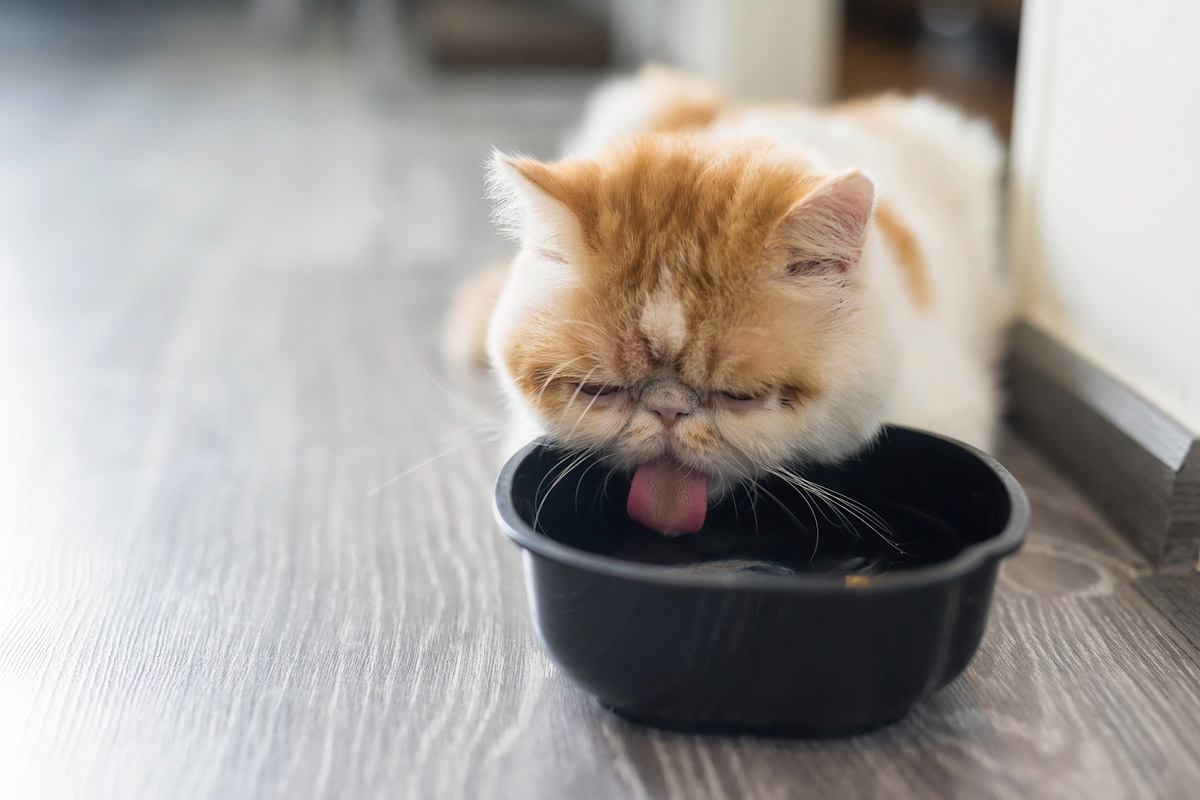Crystals in Cat Urine: Are they a Cause for Concern?

If you’ve ever had a urinary tract infection, you’re probably able to imagine just how painful and inconvenient it is to have problems with your urinary tract. While not quite the same as a UTI, cats can develop something known as struvite crystal stones, which will cause your feline plenty of pain and discomfort if left untreated. In extremely severe cases, death is also a possibility.
A condition that’s usually caused by diet and insufficient water consumption, here’s how you can protect your pet from this unnecessary suffering!
What exactly are these crystals?

When a cat produces urine in its kidneys, it is stored in its bladder and then released out of the body through the urethra. Along the way, the urine washes away dissolved protein waste and excess minerals, including struvite crystals, which are made up of phosphate, ammonium, and magnesium.
Typically, these crystals are microscopic and able to pass out before they become big enough to cause problems, but in the event that they aren’t excreted from the body, they can join together to form small, sand-like grains.
As they continue to grow into larger stones that vary in size and shape, these stones may start to restrict the outflow of urine, causing a build-up of urine and waste elements in the bladder. The tension in the bladder then causes pain, and the retained waste elements can seriously harm your cat’s body.
These stones can also form anywhere in the urinary tract, with those in the bladder being referred to bladder stones while those in the kidney are known as kidney stones. However, in some cases, the obstruction can occur in the urethra, which comes with a fatal risk of complete blockage of the urinary tract!
How can you tell if your feline has stones?
Similar to the tell-tale signs in humans when they contract kidney stones, bladder stones, or simply have an infection of the urinary tract, cats will be in extreme discomfort.
Here are some signs of struvite stones in cats to watch out for:
– Frequent use of the litter box
– Urinating outside the litter box around the home
– Straining to urinate
– Painful urination accompanied by crying sounds
– Excessive licking of the urethral area
– Bloody urine
– Poor appetite (Not even a delicious cat treat from your local pet shop, will get them excited!)
What does it mean if your cat has a build-up of urine crystals?

Microscopic crystals are normal, but a build-up of stones are not. There are many reasons for the formation of them:
- Your cat has high levels of ammonium, magnesium and phosphate in their urine. A change in diet is advisable.
- Even though it’s less common in felines than in their dog counterparts, a build-up of crystals might be caused by a urinary tract infection.
- They might not be drinking enough water. Many cats are reluctant to drink from their water bowl as they’ve evolved to get most of their moisture from their prey.
Luckily, struvite stones are the most common urinary stones in cats and can be managed if treated in time. If you ever suspect that your cat might be suffering from them, a quick visit to the nearest vet in Singapore will be able to dissolve the issue (and the stones!) with dietary recommendations and medications, if any.

On your part, make sure to keep a close eye on your pet and do all you can to encourage it to drink more water! Whether it’s buying a water fountain for your kitty or switching to wet food, there are various ways to entice it to stay healthy and hydrated, as seen in our guide here.








